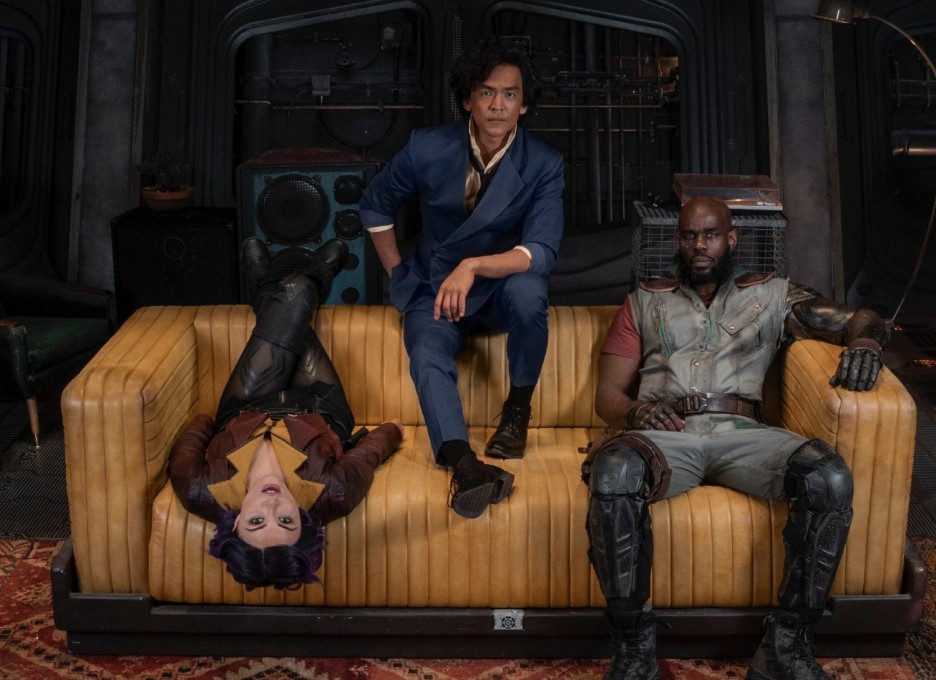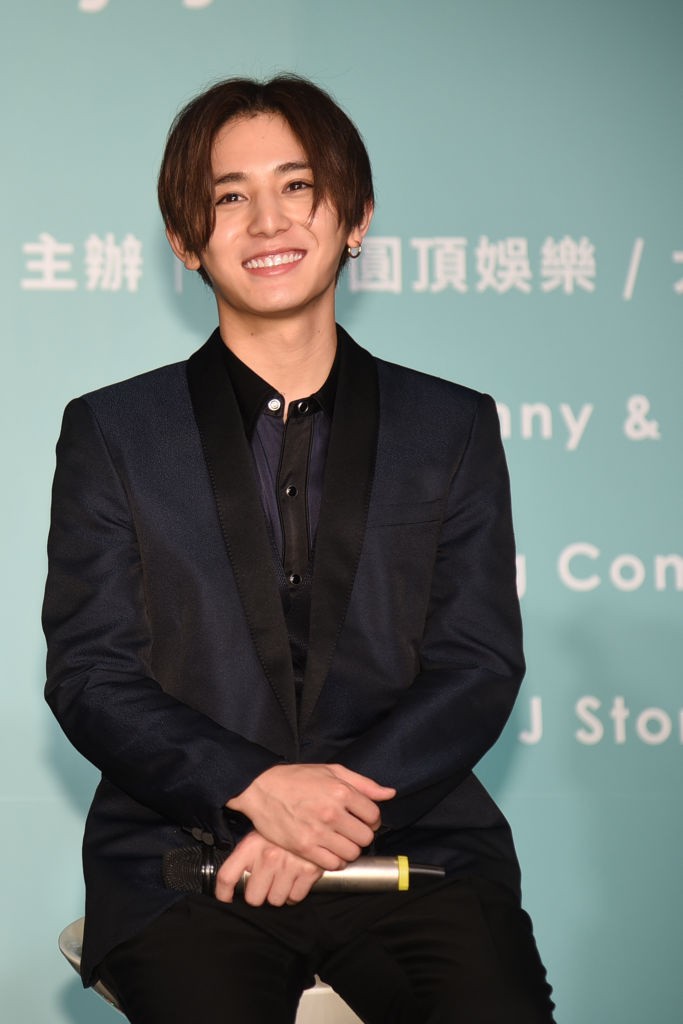Enstarz's Guide on How to Adapt Anime Properties to Live Action in Celebration of Netflix's Upcoming "Cowboy Bebop" Live Action Series

With Netflix's John Cho-led "Cowboy Bebop" live action series drop right around the corner, this highly-anticipated event got me thinking about different anime adaptations and why certain adaptations satisfy fans more than others. Adaptation is a tricky tightrope to walk. Similar to translating across languages, striking the balance between direct transfer and capturing the spirit of the property is incredibly important. However, after reflecting on my personal favorite anime adaptations, I came up with a list of best practices.
Hey, Hollywood! Here's How to Properly Adapt Anime to Live Action
1. Make the Designs Feel Lived-in (Also, Obtain Good Quality Wigs!)
One of the first aspects of an anime live action adaptation that can immediately turn me off is the design of the production. The design comprises everything from how the locations or settings look to the costume design and character hair and makeup. Anime is a colorful, vibrant medium, and what looks good in that art form doesn't always translate well under the sharp focus of cameras.
When productions directly lift designs from the anime and create it in live action, the designs often look fake because everything is too colorful and shiny. Supposedly, the characters and props you're depicting onscreen have been in that universe for a few years. This means that characters' clothing and surroundings should feel lived in or worn in. And, if a character has a striking hair color, the best way to get that across, without making the character look crazy in live action, is to find the closest real-world equivalent and go for that. The number of times a horribly fake-looking wig has taken me out of an anime adaptation viewing experience is so numerous, that getting a good quality wig is high on my list of "must-haves" if wigs are necessary in a production.
My favorite example of this is how the team behind the "Samurai X" live action film series adaptions approached bringing the iconic characters to the big screen. Take the protagonist, Takeru Sato's Kenshin Himura. In the anime and manga covers, Kenshin is depicted as a redheaded samurai with bright red robes. In real-world Japan, this would be an unusual look that may end up looking artificial if the filmmakers had decided to lift that look directly from the anime or manga.
Instead, for Sato, they dyed his black-brown hair (or gave him a wig - frankly, it's so convincing I can't tell the difference) with reddish highlights. His robes are still red, but the costume designers chose a muted color and gave the material a more worn-in look, lending the clothing a look of realism, instead of having it look like Sato showed up in cosplay. Admittedly, since "Samurai X" takes place in historical Meiji Era Japan, the costumes aren't super outlandish in design, so maybe it's easier to adapt than some of the crazier anime or manga outfits. But, the extra effort of the design team to ground the characters and world of "Samurai X" in realism is worthwhile of praise.
2. Find Actors That Look Like Stepped Out of the Manga/Anime
I'm a huge fan of "The Lord of Rings" trilogy. One line from the special feature DVD's that's lived rent free in my mind since middle school was when director Peter Jackson mentioned that he chose the talented cast by finding actors that looked like they walked straight out of the pages of the books.
When adapting anime properties, directors should take a similar approach. Even though it sounds shallow, if the characters don't look similar to the source material, fans are going to have a harder time accepting the live action cast. For instance, when I first saw the initial stills of John Cho as Spike Spiegel, I wasn't immediately convinced.
Let me preface this by saying I love John Cho - I think he's an excellent actor and I believe in the #StarringJohnCho campaign. However, despite not being the most familiar with "Cowboy Bebop" beyond seeing the anime movie by chance one time when I was in elementary school, my impression of Spike was that he was this long and lanky cool guy, and at first glance, I wasn't convinced by Cho's choice. I know I wasn't alone because there have been articles about how fans thought Cho was too old or otherwise physically unfit to play Spike. Thankfully, after watching the trailer, I was more convinced. I do think Cho got the essence of Spike's cool. However, I think my initial skepticism could've been alleviated if the physical resemblance was also there.
The converse example of this would be Ryosuke Yamada's casting in various anime live action adaptations. Full disclosure, I'm a fan of Yamada's boyband Hey! Say! JUMP and he's my favorite in the group. But, putting aside my personal biases, I can see why Japanese casting directors continuously cast the boybander-slash-actor in anime adaptations. To date, Yamada has played Shiota Nagisa in the "Assassination Classroom" live action film adaptations, Edward Elric in Netflix's "Fullmetal Alchemist" live action movie, and Hajime Kindaichi in Japan's long-running "The Files of Young Kindaichi" live action TV drama, among others. My hunch is that Yamada keeps getting cast in these roles because if your live action anime adaptation needs a pretty-looking, short male lead, Yamada is a solid go-to. Yamada's pretty boy looks and diminutive stature make him look like he just stepped out of the pages of the manga. The fact that he's a talented actor is a bonus!

3. Figure Out the Tone/Essence of the Anime and Direct Actors' Performances Based on Your Findings
Another way to take an anime fan out of a live action adaptation is if the actors' performances are too broad or ridiculous. While the actor may be to blame, the director really is where the buck falls for this point. This is because an actor can always be guided to give a different performance, either by going bigger or smaller. And, if the director gives the actor the wrong notes, the actor's performance may look out of place.
An example of this would be Nat Wolff's performance as Light Turner in Netflix's greatly maligned "Death Note" live action film adaptation. Fans have described Wolff's performance as cringe worthy and too exaggerated, often pointing to the scene when Light first encounters Willem Dafoe's death god Ryuk. If the tone of the anime was taken into consideration and the director had decided to adapt that tone more faithfully, then perhaps Wolff's performance would've been adjusted and been better received.
This critique doesn't mean that ridiculous performances aren't allowed in a good anime live action adaptation. An example of a properly utilized "big" performance would be Kazunari Ninomiya's Koro-sensei. In "Assassination Classroom," Koro-sensei is literally a giant yellow octopus alien that took a bite out of the moon and wants to destroy the Earth, unless the students of Class 3-E learn assassination techniques and kill him first. With such an absurd setup, Ninomiya's signature "Niu-hu-hu" laugh and exaggerated speech patterns make sense in context of the type of film, a satirical action-comedy. It all just depends on the context and the essence of the world you're building!
4. Be Realistic About How Much to Adapt and Judicious About Which Medium to Use
Depending on how long running the manga source material is, an anime can have between 12 to 26 episodes. Some anime have hundreds of episodes if the story is still ongoing. Thus, when you are deciding to adapt an anime into live action, it's important to consider which live action medium to choose. If the story can be satisfactorily told in a few installments, consider using a film or film series. However, if the story is too vast and sprawling, then you may want to choose a TV series format so you can properly explore the story.
For example, while I'm not a fan of the live action "Attack On Titan" adaptations, the decision to adapt the anime series into a film series makes sense. At the time of the both live action films' release, Wit Studio had only released the first two seasons. With such a contained story, two feature length films is enough time to explore it.
Similarly, when different Asian countries adapt "Boys Over Flowers" into live action, they always choose a TV series. Because Tsukasa Domyouji and Tsukushi Makino's love saga has so many twists and turns, there's no way to contain their entire story into a feature film. The only way to feel every heartbreak and love revelation is to watch "Boys Over Flowers" as a TV series. Being smart about which medium is the best fit for the anime you would like to adapt will help you avoid pacing issues and satisfy fans by finding the best conduit to tell the story they love.
5. Have a Clear Vision And Stick to It
As a director, you should have a clear vision about the story you're trying to tell. This vision could include anything from the tone you would like to employ to different design choices that give audiences a different visual experience. If you want to tell an innocent, school romance, like the excellent "Kimi ni Todoke: From Me To You" live action adaptation, then that's the look and tone you should go for. To get that vision across, the production cast the late popular young actor Haruma Miura. "Kimi ni Todoke" also chose pretty pastels and nostalgic warm colors of the film's cinematography to evoke young love. It all makes sense. Everything looks so natural, I often forget that "Kimi ni Todoke" is based on a manga and anime.
One thing Netflix's live action "Cowboy Bebop" has going for it is that it's clear that the production has a particular tongue-in-cheek tone in mind and the designs are consistent. Perhaps if the series sticks the landing, it will be able to convince longtime "Cowboy Bebop" fans that it's a tribute to the anime series they love.
Well, what do you think? Do these best practices hold the key to making faithful and satisfying live action anime adaptations? Let us know!
"Cowboy Bebop" will be released on Netflix this Friday, November 19th. For more entertainment news and commentary, check out Enstarz! We bring you the latest on your favorite celebrities, TV shows, and films.






